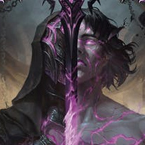For a long time in Flesh and Blood, dual wielding was something relegated to the Blitz format, where Kassai, Cintari Sellsword would wield her patented pair of Cintari Sabers, grinding out value with Valiant Dynamo until it was time to pop off with a Courage of Bladehold + Blood on Her Hands turn. Beyond a few decks that generally existed on the edge of the format (Combo Sabers Boltyn and Hatchets Dori), dual wielding never really caught on in in FAB's premiere format. Fortunately for Valiant Dynamo fans everywhere, Heavy Hitters was determined to change that.
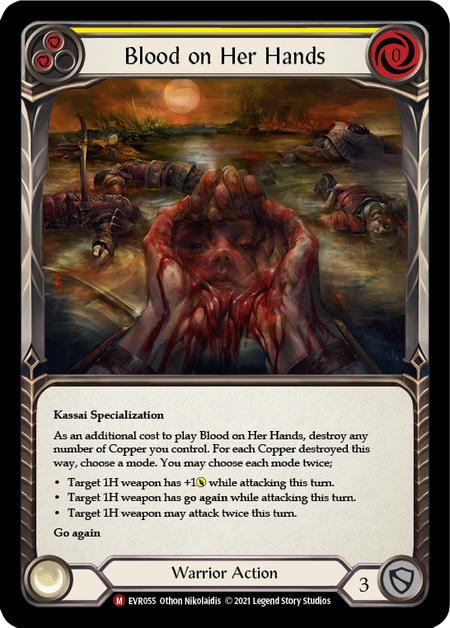
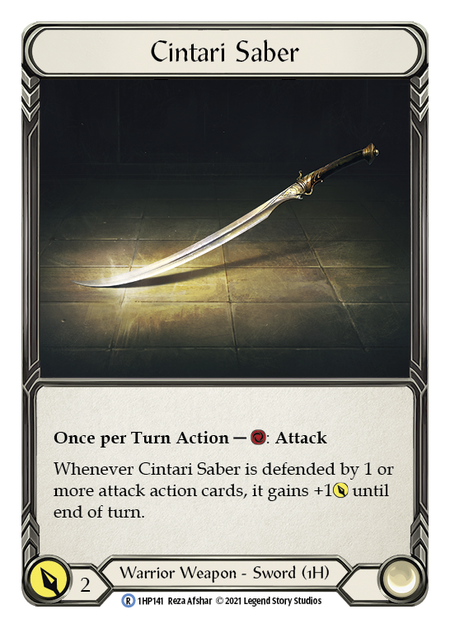
But why hasn't dual wielding caught on until now? Valiant Dynamo isn't new, and cards like Blade Runner, Hit and Run, Run Through, and Spoils of War have been around for a long time. I think there are two primary reasons for that.
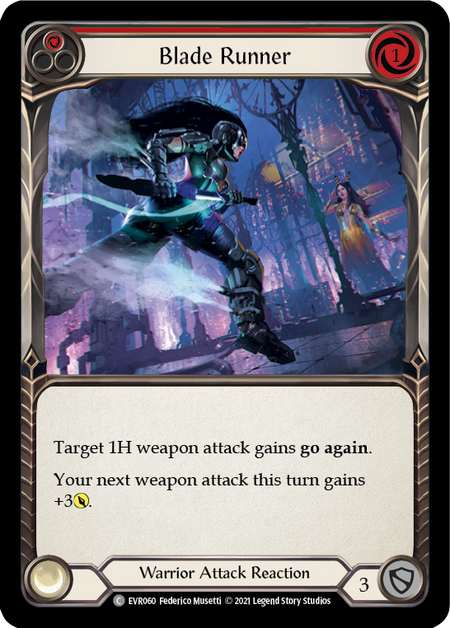
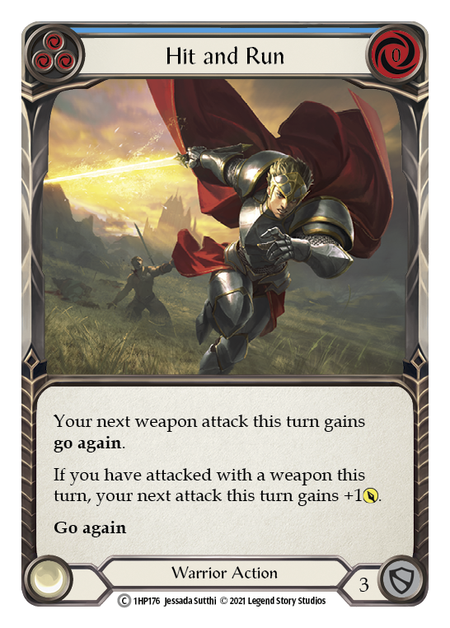
The first is a lack of payoff cards. Dori's specializations and payoff cards tend to favor her reaction-heavy builds over the steady value that Hatchets provide, while Boltyn needs a critical mass of charge and Light cards to get the most out of his abilities and power cards.
The second is the quality of the competing two-handed weapons. Dorinthea has the potential of snowballing damage with Dawnblade, while Boltyn had the raw efficiency of Raydn that encouraged him to build a largely pitchless deck.
Heavy Hitters Re-Equips the Warrior
Heavy Hitters doubled the number of playable Warriors in the CC hero pool with Kassai of the Golden Sand and Olympia, Prized Fighter. Not only do these new warriors have their payoffs built into their hero card, but neither of them came with a signature weapon.
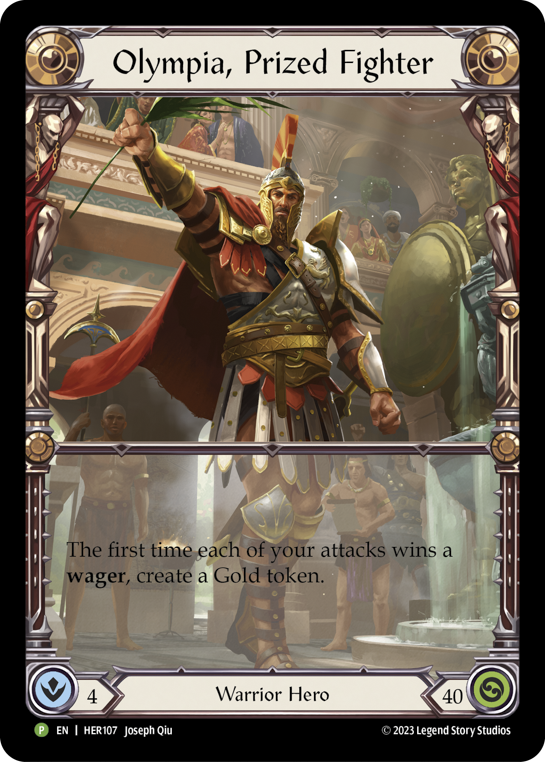
Beyond the new heroes, Warrior also received new power cards from the set. Grains of Bloodspill is a card that is very easy to underestimate until you see it in action. It's a great resource sink and provides a way to smooth future hands - and it works well alongside Braveforge Bracers and Ironsong Versus.
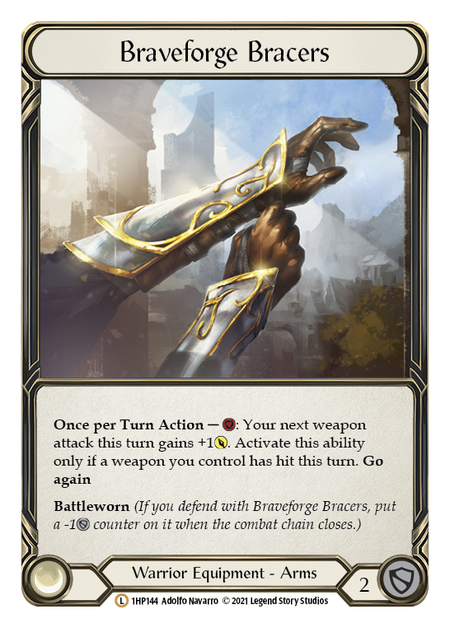
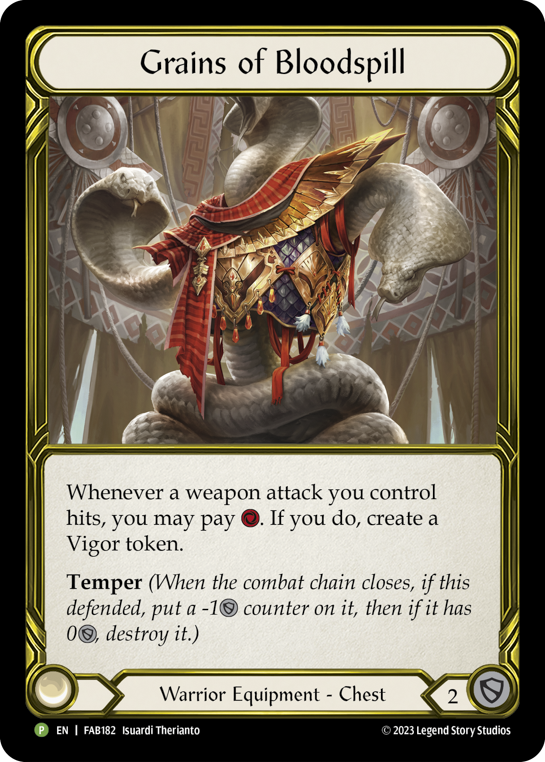
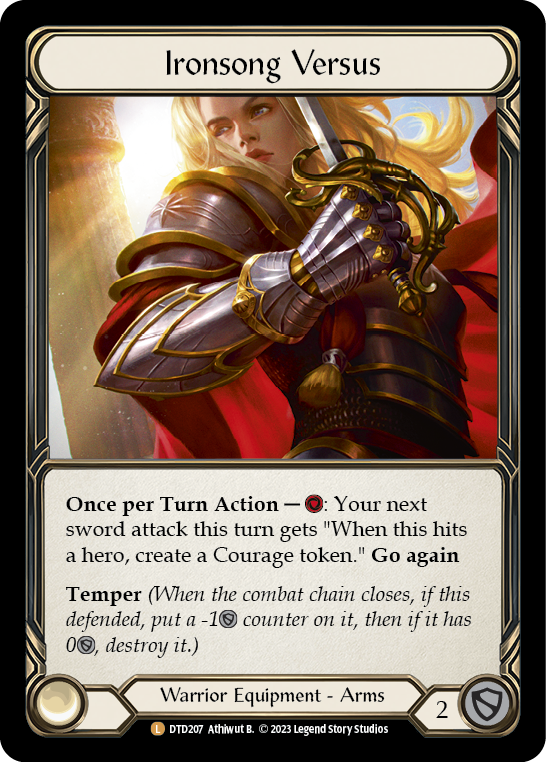
Blade Flurry is another huge upgrade for weapon wielders, as four value for zero resources is already a rate we're interested in for CC. When you account for the fact that this card blocks for three and its damage is applied at reaction speed, you've got a recipe for a class cornerstone card. Boltyn and Warriors with of an attack action focus will be less interested, but if you're a weapon-focused Warrior you should acquire your playset of these ASAP.

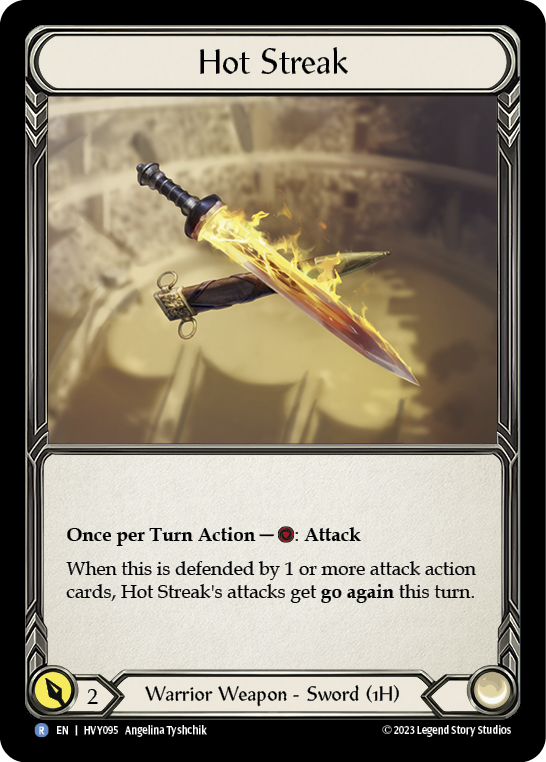
While Grains is generically good for all Warriors, it's Hot Streak that holds the potential for the greatest singular impact on the potential to dual wield. Compare Hot Streak to Cintari Saber; then think about the relative strength of Agility vs Might in Heavy Hitters limited.
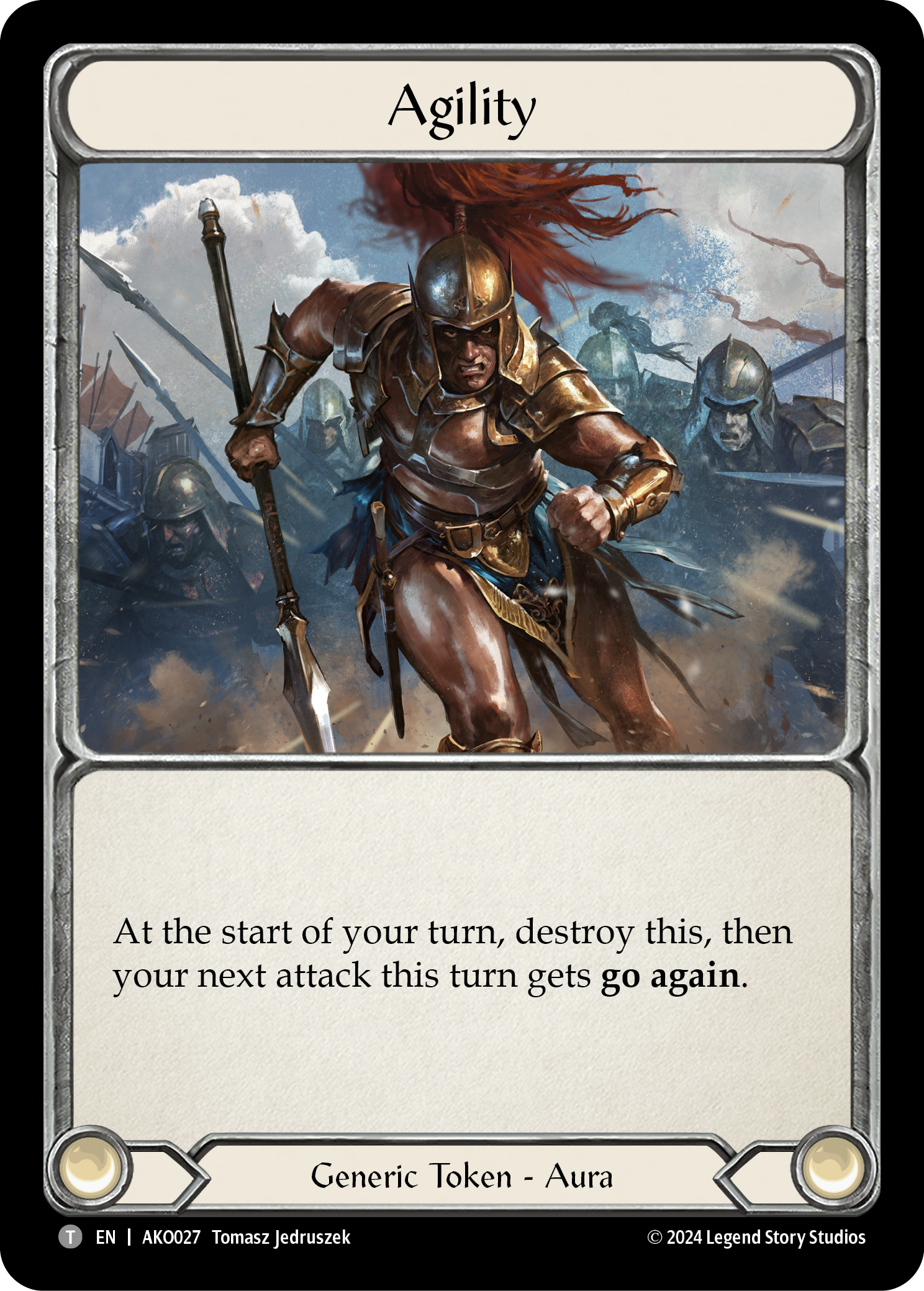
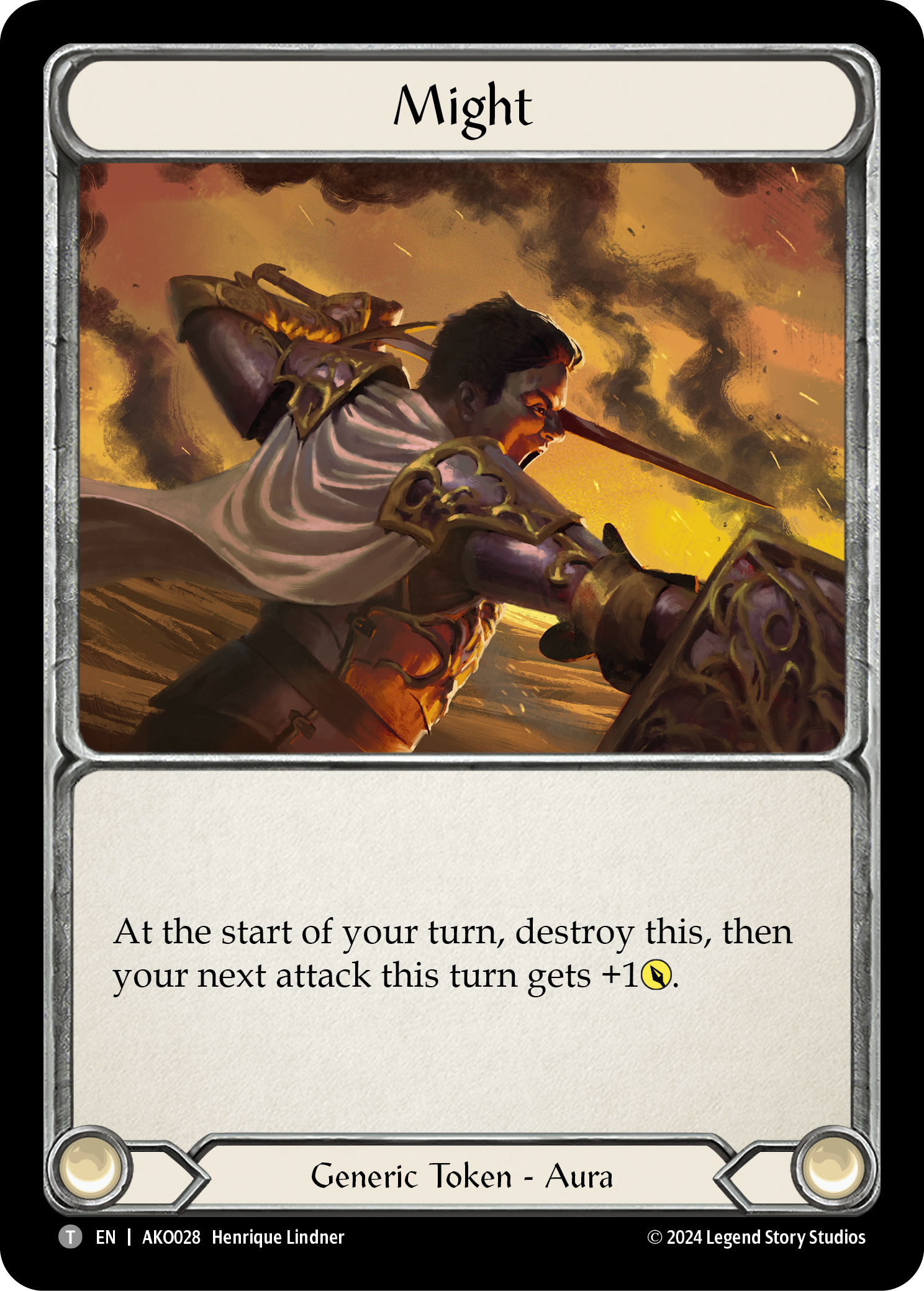
Potential go again as a permanent ability on a weapon is very strong (Mandible Claw anyone?). Imagine a two-card hand of red Warrior's Valor and something in blue. You're threatening 5 damage that gets go again if it hits, or gets go again if the opponent blocks with any attacks, which means you can use your last resource to swing your second weapon (presumable a Cintari Saber) and reset your Valiant Dynamo. Of course, not every class is reliant upon attack actions for blocking, so the mileage there will vary; but into attack-heavy decks, that turn leaves the opponent with no good option.
The last major contribution to the dual wielding revolution is the numerous options Warriors now have for creating Agility tokens. If you go into your turn with an Agility token, any blue or yellow card represents a full turn of value. If you're resetting Valiant Dynamo and swinging Hot Streak and Saber, that is 5 value from a single card in hand (6 if you can utilize Grains/Bracers). If you're using Hatchets of Body and Mind, it's 6 value (or 7 with Grains/Bracers). The way I value an Agility token is, the token gets credit for all the value you got from the second swing it enabled, which is 2-5 when wielding swords and 3-5 when wielding axes.
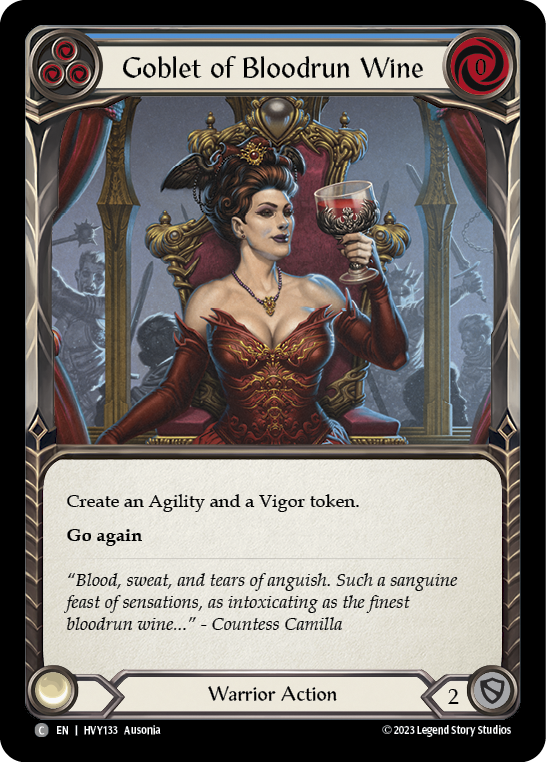
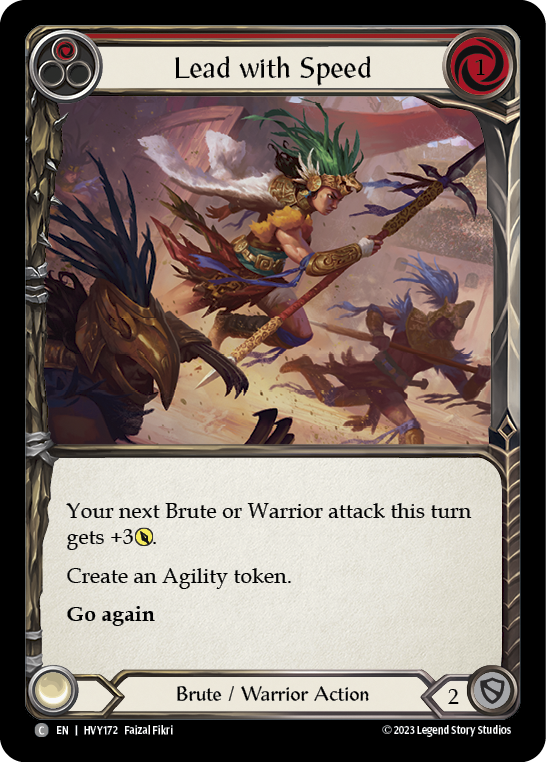
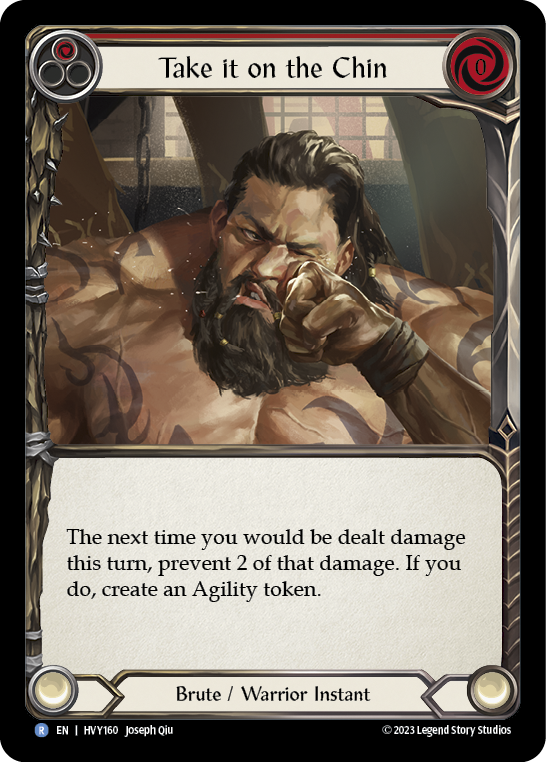
Now take a look at Lead with Speed and Take it on the Chin through that lens, and you'll start to see some great math. From a value standpoint, Take it on the Chin is on par with red Blade Runner in these dual wielding decks.
Swords vs. Axes
The question of swords or axes doesn't have a simple answer. From a math standpoint, Hatchets give you one more point of value each time you get to swing with both weapons; meanwhile it is more difficult to quantify the value of the potential go again on Hot Streak. To figure out which pair of weapons is right for your hero, we need to dig deeper into the respective card pools for axes and swords, as well as the hero abilities and specializations available to each.
Sword Support
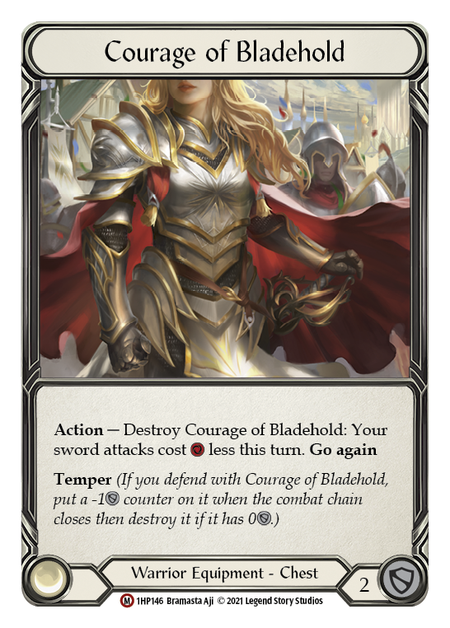
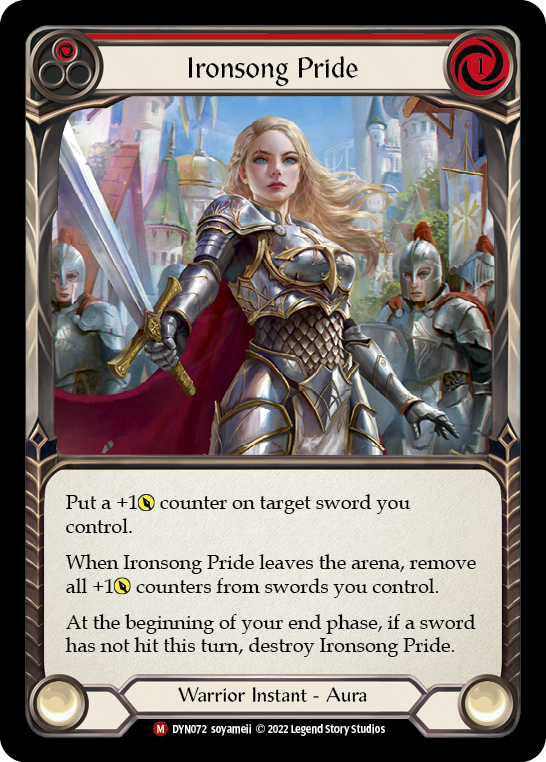
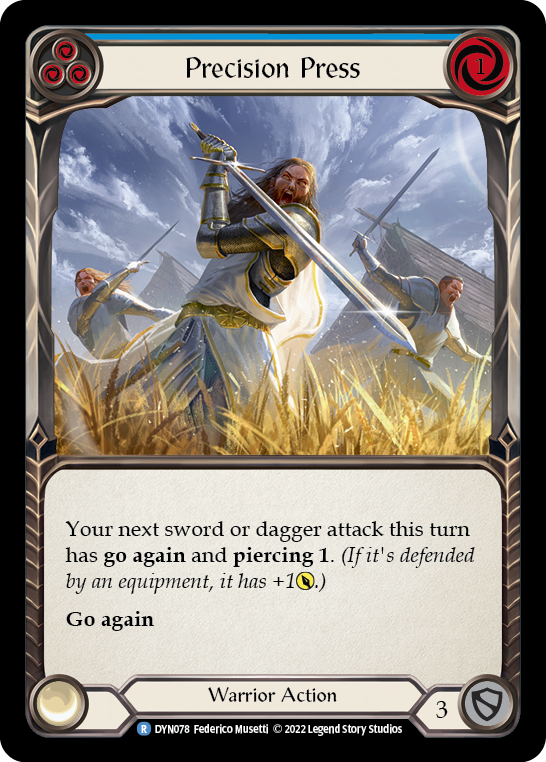
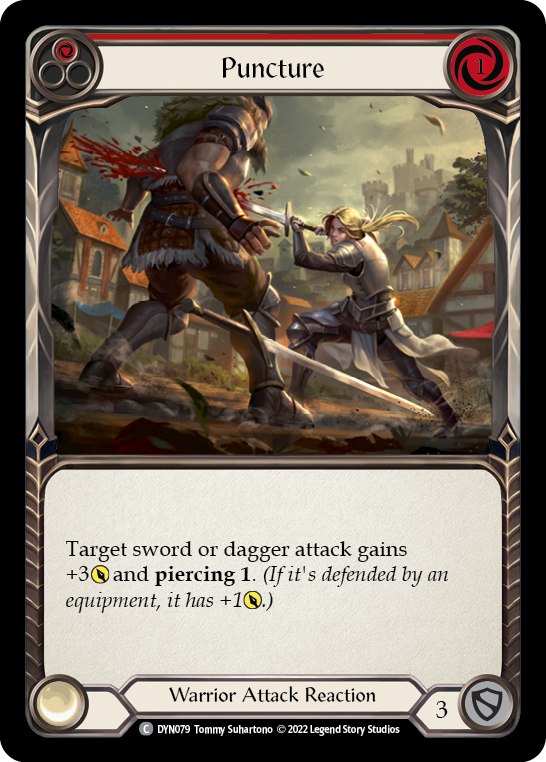
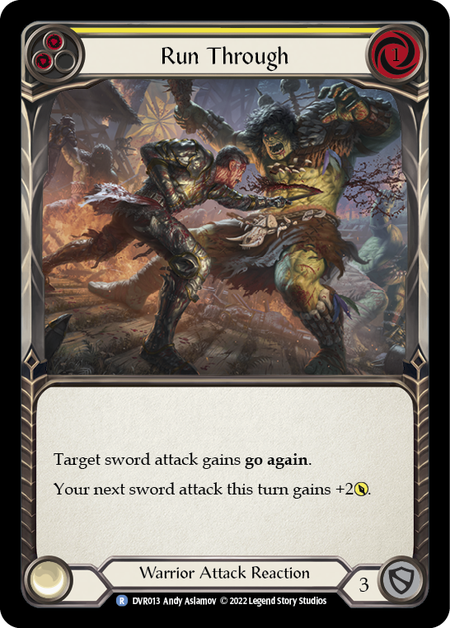
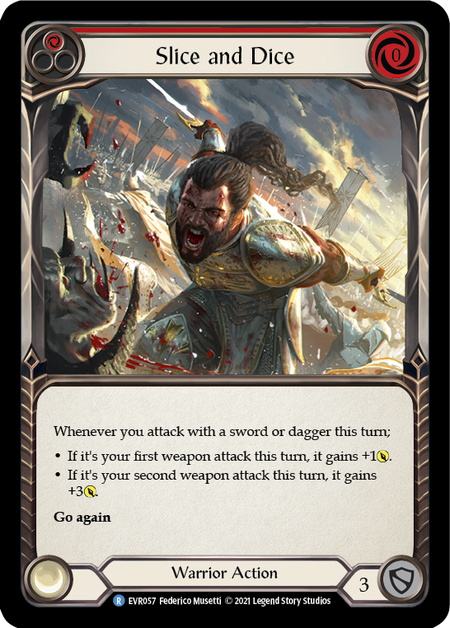
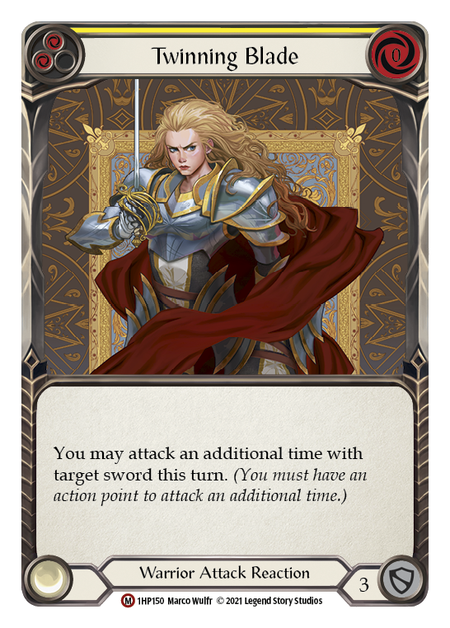
Axe Support
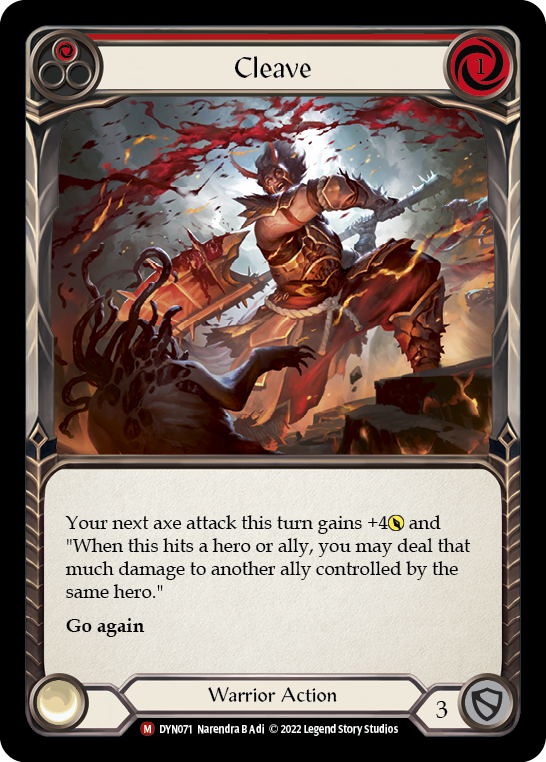
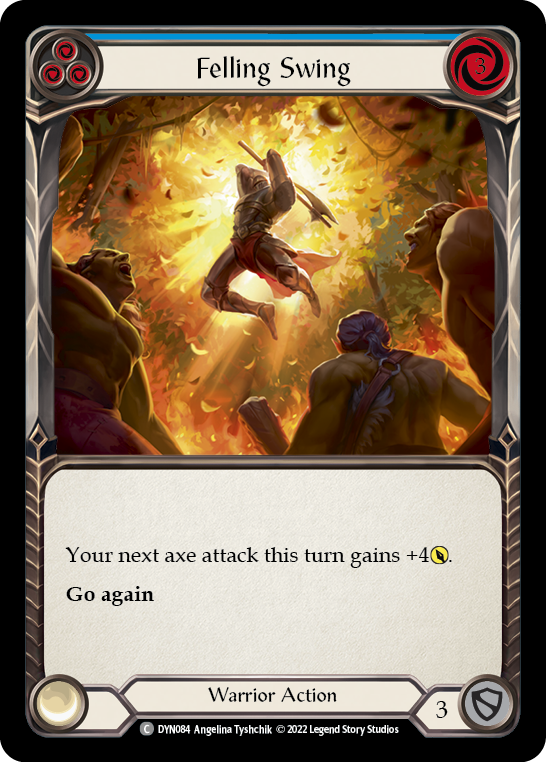
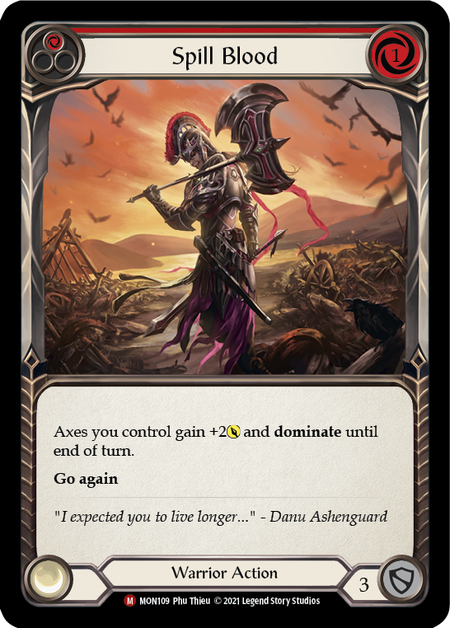
When it comes to which weapons have a better support pool, swords are the clear winner on quantity. Red Slice and Dice is great damage output, on par with Blade Flurry. Run Through (currently available only in yellow) is basically a clone of yellow Blade Runner for swords only. Courage of Bladehold enables for some huge explosive turns, but requires you be playing swords specifically.
But axes aren't without some gas of their own, as Spill Blood is the kind of cards that ends games. Cleave is also great into Dromai and is solidly on-rate in general.
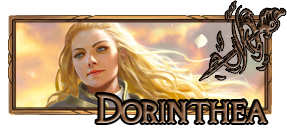
Dori has four specialization cards, but Glistening Steelblade and Chorus of Ironsong are Dawnblade-specific, so we'll ignore them for this. Steelblade Supremacy and Singing Steelblade are both very powerful cards, but they lose some amount of potency in dual-wield builds that are less focused on combat tricks.
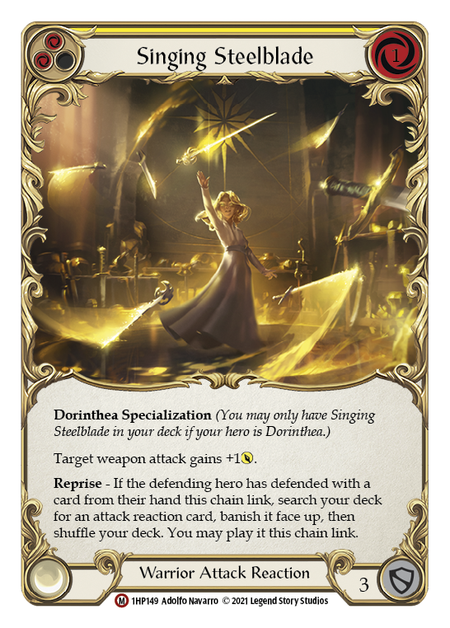
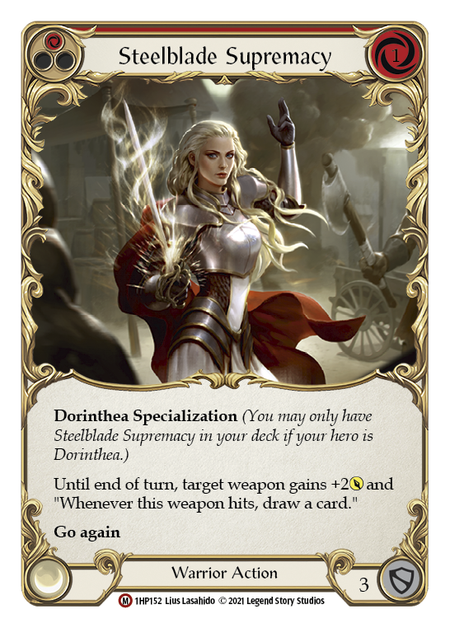
Dori's ability is pretty simple: if we hit, we get an extra weapon swing. It may seem innocuous, but with the advent of Agility, Dori is able to get great value out of that third swing.
Her ability makes Hit and Run a particularly potent card. If you're running hatchets, and start your turn with an agility, a blue, and a red Hit and Run, you can swing for 2, 6, and then another 3 on the back end. If your opponent spends cards on defense and prevents the last swing for 3, that's still a win since dual-wield Dori decks are more value decks than explosive decks, and we want our opponents to be trying to play small ball with us.
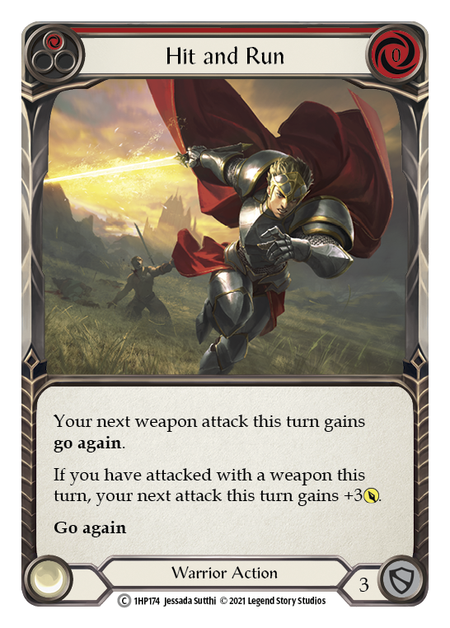

The existence of Agility and Vigor tokens also let us turn a card like Spill Blood into a real offensive weapon. If you start your turn with an agility and vigor (Goblet of Bloodrun Wine anyone?), you can use the Vigor to pay for Spill Blood, and then proceed to carry out the previously described turn for 4, 8, and 5, all with dominate. That is the sort of turn that can close out a game against most opponents at 5 or less life.
Conclusion: If you're going to dual wield with Dori, hatchets get the edge, as they consistently represent 1-2 more points of value than swords on your bread and butter turns.
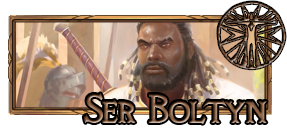
Boltyn has different concerns for his dual-wield decision-making. His specializations, V of the Vanguard and Lumina Ascension, are both weapon type agnostic, so like Boltyn's hero ability they don't inform our decision one way or another. The answer here is fairly simple though, and it comes down to two things: Courage of Bladehold, and the ability to conserve soul. Combo Boltyn needs Courage of Bladehold to facilitate his double or triple Lumina turns that generally end the game on the spot. Courage only works for swords, so that pretty much makes our decision for us.
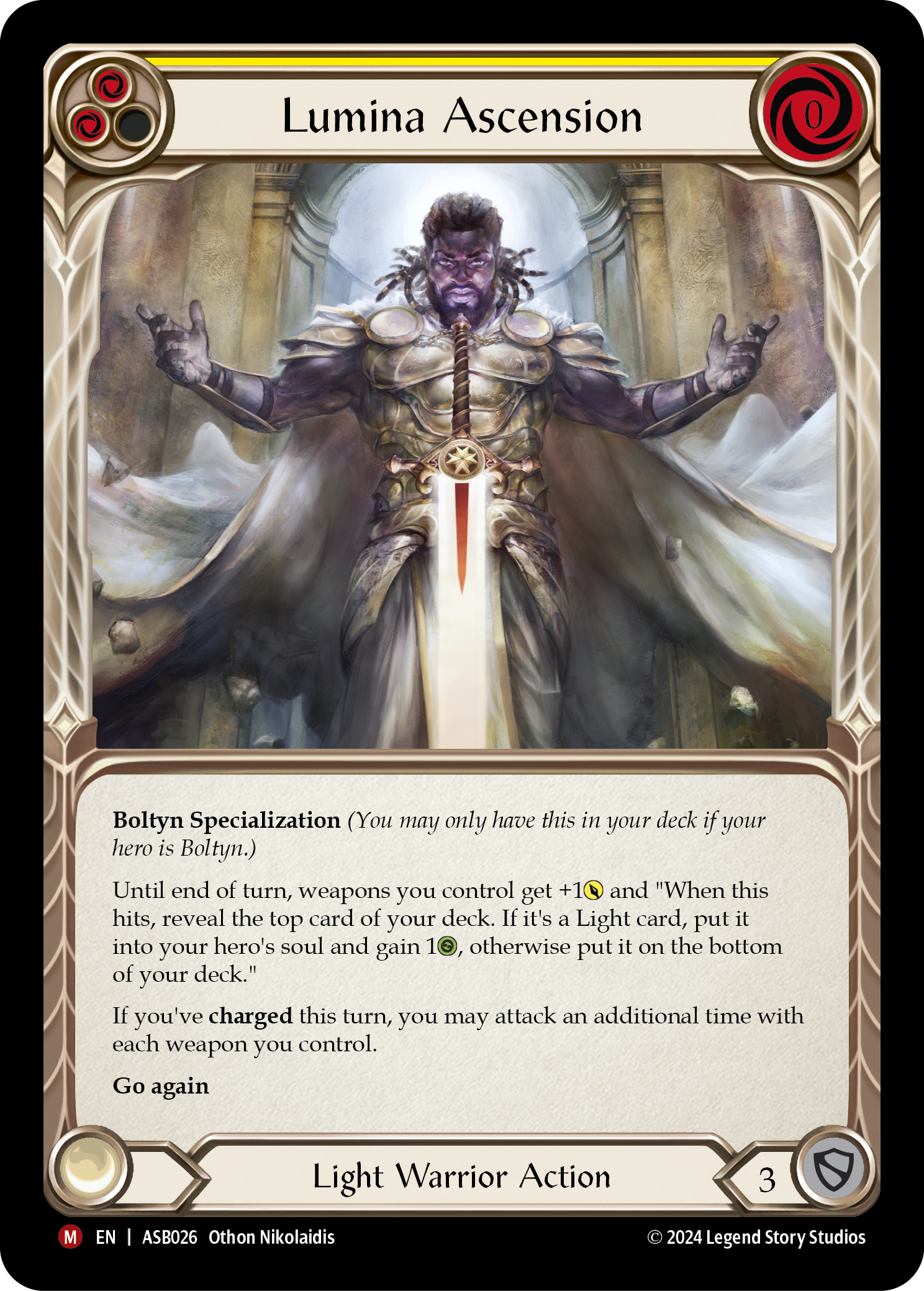
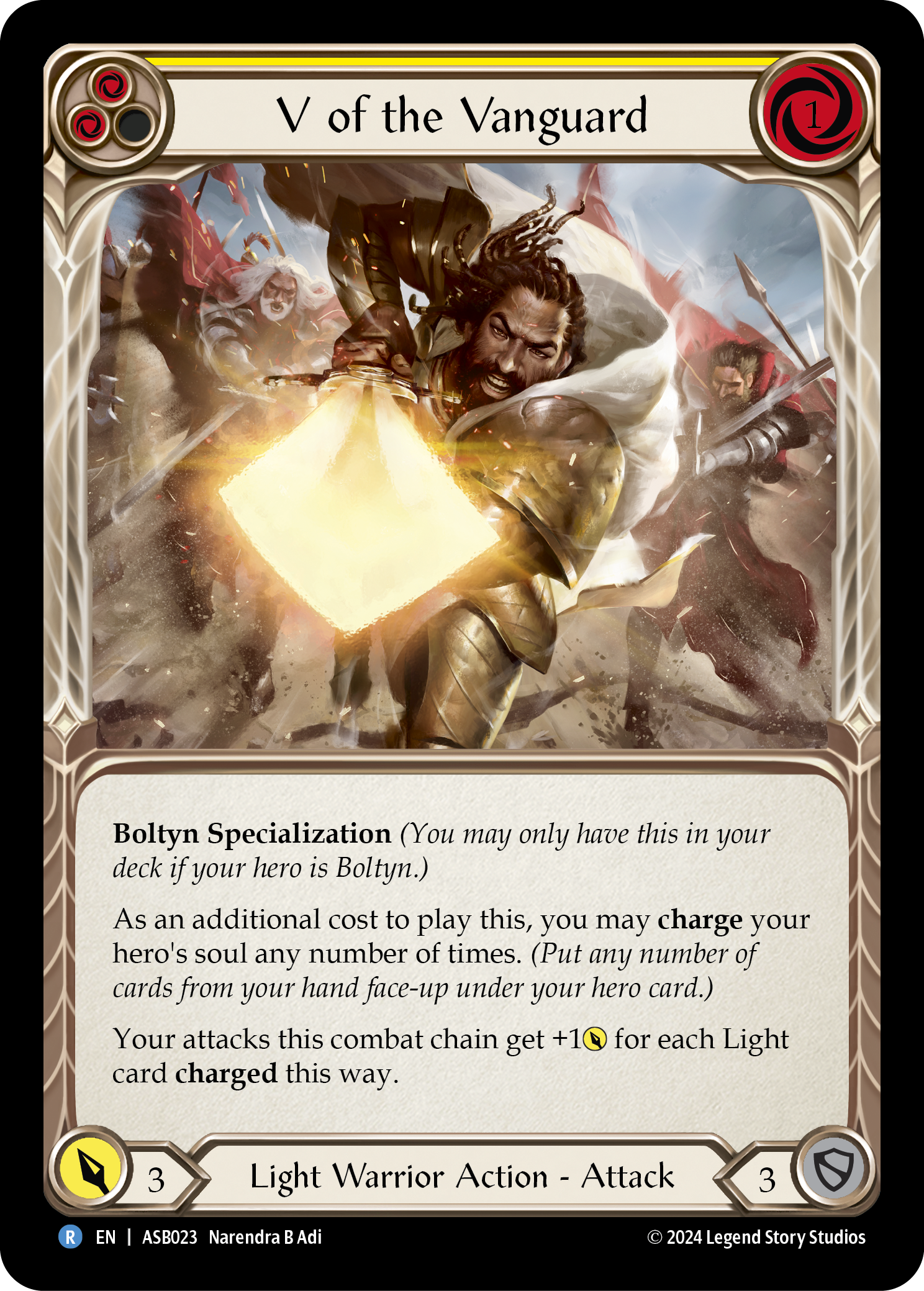
The next decision is which swords - and that's where Hot Streak gets the nod over one of the Cintari Sabers, as it gives the deck a chance to go wider without costing additional cards from soul. Take Flight pitching a blue and charging a card has the potential to swing for 8 damage without expending any soul, which lets the deck play a decent midrange plan while build towards a Lumina combo turn.
Conclusion: Courage of Bladehold works for swords, so we play swords.
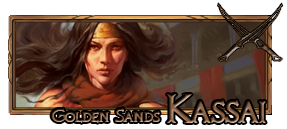
We don't need to dig very deep to get our answer for Kassai. Her first ability can discount sword attacks, and combined with the extra quality sword cards that either give copper on hit or just represent good value per card (Outland Skirmish, Slice and Dice, Run Through) in the colors that enable her secondary ability, swords are all too easy of a decision here.
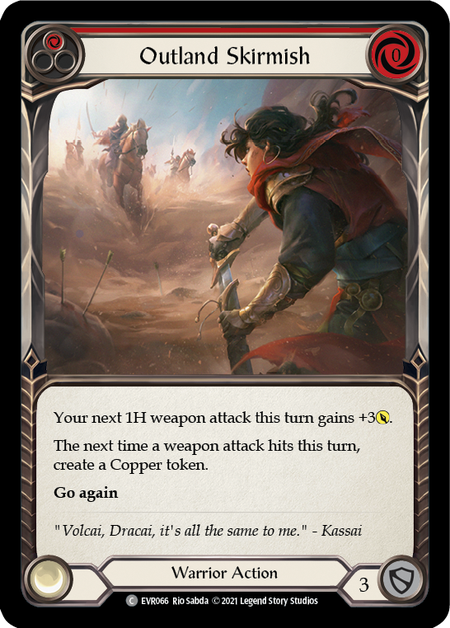
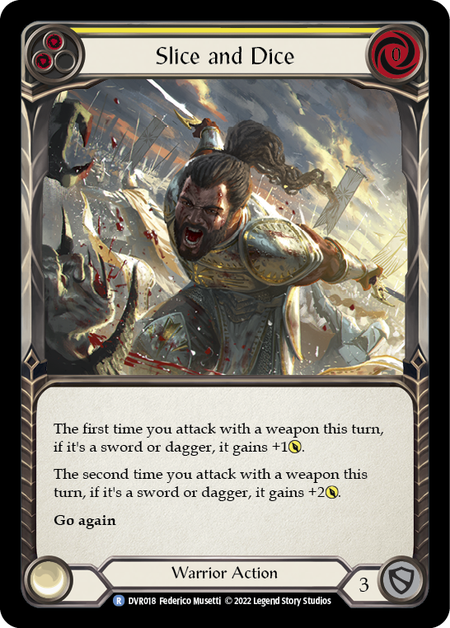
Specialization-wise, Blood on Her Hands represents a ton of value from one card, assuming you have the copper to fuel it. It's not quite as strong in CC as it was in Blitz, where decks would run Courage of Bladehold specifically to make sure that the BOHH turns hit as hard as possible; but even without Courage it's still a very strong card.
Raise an Army is Kassai's other specialization, and while it doesn't specifically care which weapon type you play, Hot Streak represents a ton of extra value with Cintari Sellswords that care if you've attacked. If you're late in a game where the opponent needs to be blocking and has mostly attack actions, you can turn a single blue card into 8 damage and work towards fatigue by damage.
Conclusion: Hot Streak and Cintari Saber are definitely the way for Kassai.
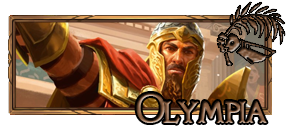
Olympia is the warrior with the least amount of inherent direction to their weapon choice. Both his hero ability and one specialization, Up the Ante, are weapon type agnostic. Olympia definitely wants to be wagering though, which means we want cards like Hold 'Em and Edge Ahead, all which encourage opponents to block. If we're encouraging opponents to block more, then that means Hot Streak gains value, as it is difficult for many decks to block without it giving go again.
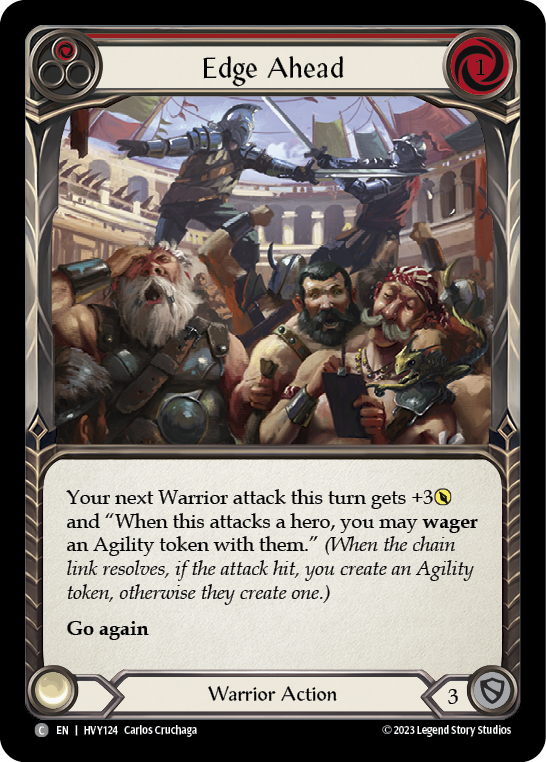
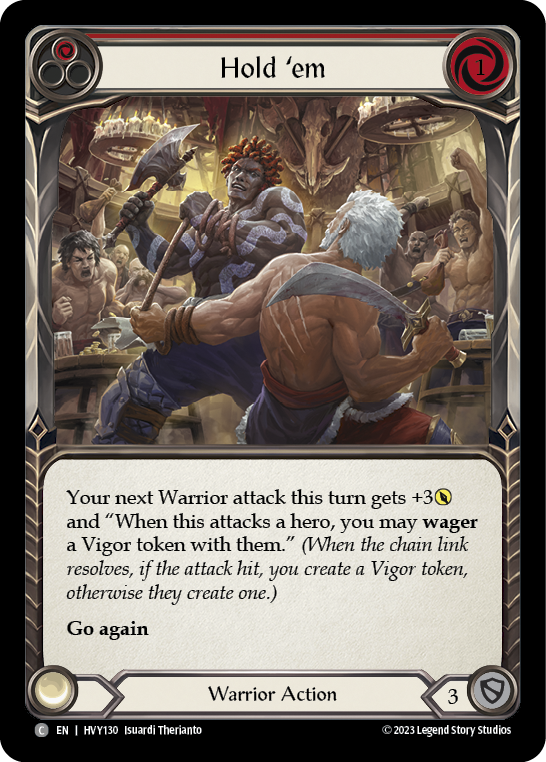
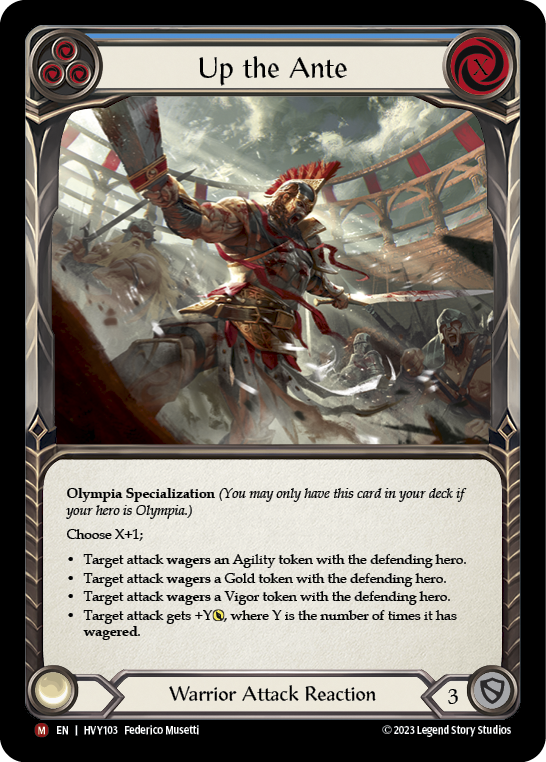
On the other hand, if you're looking to play the raw numbers game, Hatchets are consistently one point better when your opponent isn't blocking, and Spill Blood is an excellent way to make sure you're forcing your hatchet wagers through. Results don't lie either, as there was recently a 9-0 Hatchets Olympia deck that took down a Road To Nationals event.
Conclusion: Despite the recent RTN win, I give a slight edge to swords for the ability to present opponents with two bad options - but this is definitely the closest to a tie of any of the warriors.
Double Trouble
Dual wielding in CC is here to stay, and only time will tell which hero and weapon combinations are the most potent. Despite my personal favorite being Axes Dori, I suspect Kassai, wielding Hot Streak and Cintari Saber, will continue to be the most heavily represented dual wielder in the format. If you want to see what the best players in the world think, keep an eye on the upcoming Pro Tour: Los Angeles happening at the end of March!


